Hamsa tattoos are becoming increasingly popular in the world of body art, but what do they really mean? The hamsa symbol has been used for centuries and has a deep cultural significance in many regions around the world. In this article with Impeccable Nest, we will delve into the meaning behind the hamsa tattoo and explore its various interpretations.
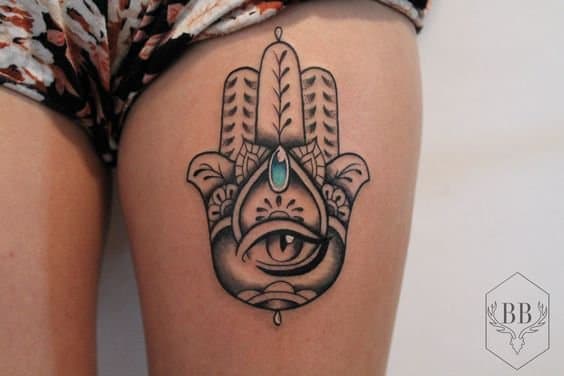
What is a Hamsa?
The hamsa is a hand-shaped symbol that has roots in many different cultures, including Judaism, Islam, and Hinduism. The word “hamsa” comes from the Arabic word for “five,” referring to the five fingers on the hand. The hamsa is often depicted with an eye in the center, known as the “evil eye,” which is believed to protect against negative energy.
The Meaning Behind the Hamsa Tattoo
Hamsa tattoos can hold various meanings for different individuals, but some of the most common interpretations include:
Protection
The Hamsa tattoo is a popular choice for those seeking spiritual and personal protection. The Hamsa symbol, also known as the Hand of Fatima or Hand of Miriam, is an ancient Middle Eastern and North African talisman that is believed to ward off negative energy, evil spirits, and protect against harm.
The Hamsa symbol features a hand with an eye in the center, usually decorated with intricate patterns and designs. The eye represents the all-seeing eye of God or the evil eye, which is believed to have the power to harm or cause misfortune.
In many cultures, the Hamsa is considered a powerful symbol of protection, good fortune, and blessings. It is often used in jewelry, home decor, and other forms of art as a way to ward off negative energy and bring positive energy into one’s life.
When it comes to tattoos, the Hamsa has become a popular design choice for those seeking both aesthetic appeal and spiritual protection. People choose to get a Hamsa tattoo for various reasons, including personal beliefs, cultural heritage, and spirituality.
For some, getting a Hamsa tattoo is a way to honor their roots and connect with their cultural identity. For others, it is a way to express their faith and belief in a higher power. Still, others choose to get a Hamsa tattoo purely for its aesthetic value, while also believing in its protective powers.
Ultimately, the significance of a Hamsa tattoo is unique to each individual who chooses to get one. Whether it serves as a reminder of personal strength and resilience, or as a form of spiritual protection, the Hamsa tattoo remains a powerful symbol that continues to resonate with people around the world.
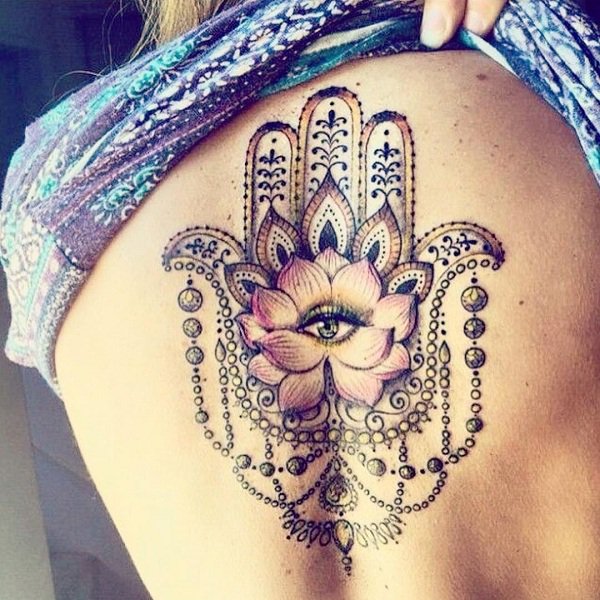
Faith
Hamsa tattoos are a popular tattoo design that has deep spiritual significance for many individuals. The Hamsa symbol is an ancient Middle Eastern and North African talisman that is believed to provide protection, good fortune, and ward off evil spirits. It is also known as the Hand of Fatima in Islam or the Hand of Miriam in Judaism.
The Hamsa symbol features a hand with an eye in the center, which represents the all-seeing eye of God or a higher power. The fingers of the hand are often depicted in a curved position, giving the symbol a unique and recognizable shape. The Hamsa tattoo can be designed in various styles, sizes, and colors, depending on the individual’s preference.
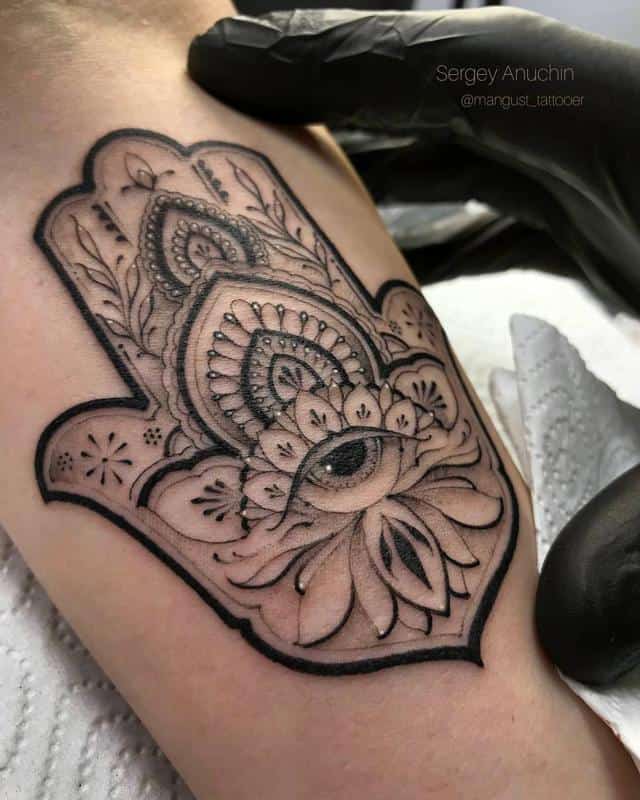
For those who choose to get a Hamsa tattoo, it can represent their faith in a higher power. The symbol is believed to bring good luck and protect the wearer from harm, making it a powerful symbol of divine protection. For some, getting a Hamsa tattoo is a way to connect with their spirituality and show their devotion to their faith.
In addition to its religious significance, the Hamsa symbol is also associated with positive energy and mindfulness. Some individuals use the Hamsa tattoo as a reminder to stay focused on their spiritual journey and maintain a positive outlook on life. The symbol’s inherent balance and symmetry represent the harmony between mind, body, and spirit.
Overall, the Hamsa tattoo serves as a powerful symbol of faith and spirituality, providing comfort and protection to those who wear it. Whether as a reminder of one’s religious beliefs or a way to stay centered and grounded, the Hamsa tattoo is a beautiful and meaningful design that holds great significance for many people.
Good Luck
The Hamsa, also known as the Hand of Fatima or Hand of Miriam, is a popular symbol in many cultures and religions, including Judaism, Islam, and Christianity. It is a hand-shaped amulet that has been used for thousands of years to ward off evil spirits, protect against harm and bring good fortune.
In recent times, the Hamsa has become a popular tattoo design among many people around the world. Some people believe that wearing a Hamsa tattoo can bring positive energy and blessings into their lives, especially when it’s placed on parts of the body associated with strength, protection, and spirituality.
The Hamsa tattoos are often characterized by intricate designs, featuring various symbols such as the eye, fish, and geometric patterns. Each of these elements has its own spiritual significance and adds to the overall meaning of the tattoo.
For example, the eye in the center of the Hamsa is known as the “evil eye,” which represents protection against negative energy and envy. The fish symbolizes abundance, prosperity, and good luck, while the various geometric patterns represent unity, balance, and harmony.
Apart from its symbolism, the act of getting a Hamsa tattoo itself can be seen as a form of spiritual practice. Many people view the process of getting a tattoo as a rite of passage or a way to connect with their inner selves. This connection can help them focus their intentions and bring more positivity into their lives.
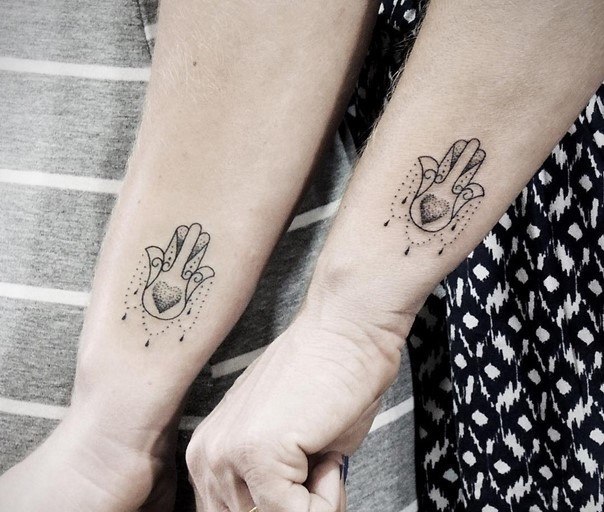
Furthermore, wearing a Hamsa tattoo can serve as a reminder to stay mindful, centered, and grateful. By keeping the symbol close to you at all times, you may be more likely to focus on positive thoughts and actions, ultimately leading to more blessings and positive outcomes.
However, it’s important to note that the effectiveness of a Hamsa tattoo in bringing positive energy and blessings into one’s life is subjective and not scientifically proven. The power of the symbol lies in the belief and intention of the wearer.
In conclusion, for those who believe in its power, wearing a Hamsa tattoo can be a meaningful and impactful way to bring positivity and blessings into their lives. However, it’s important to approach the practice with respect and understanding of its cultural and spiritual significance.
Feminine Power
The Hamsa tattoo is a popular symbol that represents feminine power and strength. This symbol has been used for centuries to represent the goddess or divine feminine energy in various cultures around the world. The word Hamsa comes from the Arabic word “khamsa”, which means “five”. The symbol itself is often depicted as a hand with five fingers, sometimes with an eye in the center of the palm.
In many cultures, the Hamsa is believed to provide protection against evil spirits and negative energies. It is also seen as a symbol of good fortune, abundance, and blessings. The Hamsa has roots in multiple religions, including Judaism, Islam, and Christianity, and is often associated with different deities depending on the culture.
In Hinduism, the Hamsa is associated with the goddess Saraswati, who is known for her wisdom, creativity, and artistic ability. In Buddhism, the Hamsa is associated with the Buddha’s teachings on mindfulness and meditation. In Judaism, the Hamsa is associated with Miriam, the sister of Moses, who was known for her leadership and courage. In Islamic tradition, the Hamsa is called the Hand of Fatima, named after the daughter of the Prophet Muhammad, who was revered for her purity and devotion.
Overall, the Hamsa tattoo is a powerful symbol of feminine energy and strength. It is a reminder of our own inner power and the divine feminine within us. Many women choose to get this tattoo as a way to honor their own strength and resilience, or as a talisman for protection and good luck. Whether worn as a decorative piece or as a spiritual symbol, the Hamsa tattoo is a beautiful expression of feminine power and grace.
Symbolism Behind the Design of Hamsa Tattoos
Hamsa tattoos are a popular choice in body art due to their positive symbolism. Hamsa is an ancient symbol originating from the Middle East. It is designed to ward off negative energy and attract good vibes, making it a powerful symbol of spiritual protection and luck. The overall design of the Hamsa contains five fingers or talons, said to represent the Five Pillars of Faith as found in Islam, Christianity, and Judaism. This interpretation of the Hamsa suggests that by wearing it close to your heart, you are connecting with divine forces for guidance and spiritual protection.

The traditional hamsa includes an eye-like symbol in its center. This higher power’s gaze offers natural protection against evil influences and keeps away unhappiness from your life like envy, hatred, and greed. Also, a blue crescent moon can be seen atop it. This crescent moon represents two things: faith in monotheism or unification through love; whatever path one takes, they will end up in the same place (Heaven).
One should take great care when designing their own Hamsa tattoo, as the colors used have powerful meanings too. Traditionally, blue is interpreted as waters going deep into spiritual realms, while green is thought to be related to harmony, referring to positive energies surrounding us all the time. Red was associated with love and devotion, telling about commitment in a career or relationship. Lastly, purple denoted magical powers connecting us with unseen realms across the world and embracing cosmic force within ourselves.
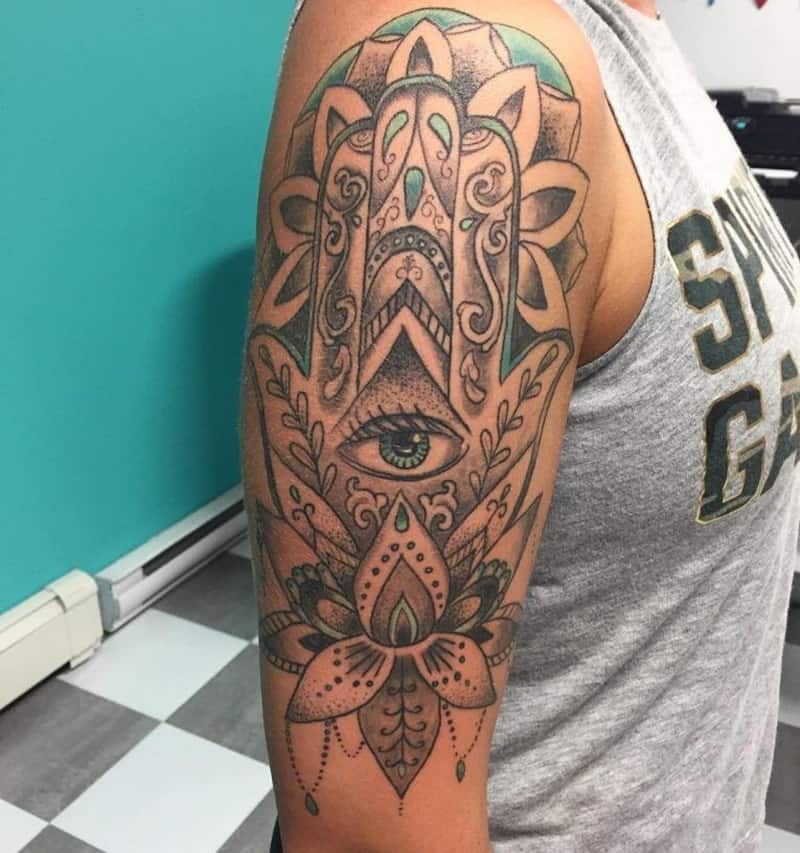
By wearing this symbolic icon near your heart, one carries with them hope for greater prosperity in the future combined with benevolent protection from divine forces such as Allah and Jesus Christ, who oversee our lives and determine the fate of humanity according to destiny written before birth. Either way, having a Hamsa tattoo carries immense symbolic potential, resulting in potent vibes impacting all aspects of life!
Cultural Significance of Wearing a Hamsa Tattoo
The Hamsa tattoo, which is also known as the Hand of Fatima or the Hand of Miriam, is a symbolic gesture from the Middle East that has become exceptionally popular in modern times. It is especially meaningful to people who come from traditionally Islamic cultures such as North Africa and the Middle East. The design itself consists of an open right hand with two thumbs pointing in opposite directions on either side of it.
In Islam, it is said that this image represents energy and protection provided by Allah, or God. Those who use this symbol believe it will bring luck, health, happiness, and prosperity to those wearing it. It can be found on jewelry and clothing across much of the world these days, but its ancient roots are thought to have originated in Judaism, where it was believed to be a sign from the creator blessing mankind with safety. In both religions, the hand of divine protection serves as a reminder that there is always someone watching over us and protecting our lives against physical or spiritual harm.
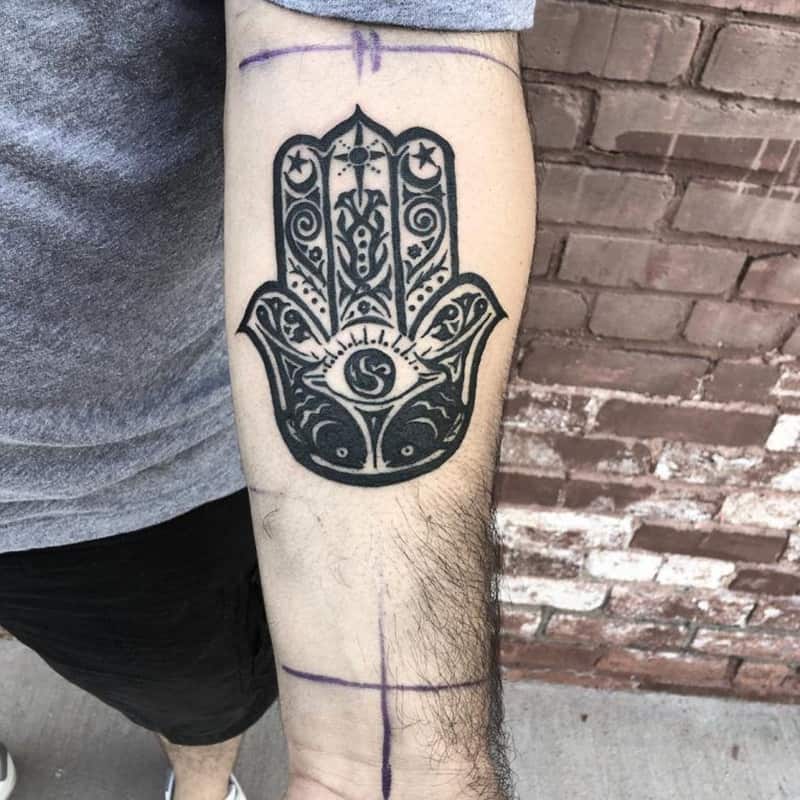
While the Hamsa tattoo carries remarkable cultural significance for many people around the globe today, its historical connotations date back hundreds and even thousands of years, when simple images such as hand gestures were used for magical protection purposes against evil spirits and malefic forces. This interpretation still holds true today: honoring someone’s faith while giving them peace of mind that they are looked after without fail is a sentiment more than relevant in our ever-changing political climate.
In addition to theological attributes, some individuals have taken additional personal meaning from this imagery, giving it significant emotional value by depicting their hopes for harmony between family members or loved ones on each finger tip of the Hamsa’s design. As time passes, so does information about how far this revered symbol stretches back into antiquity. Few would think that before culture clashes emerged from various religious sects in different regions over centuries past, all could find solace in one simple image so deeply embedded in Judaic and Islamic theology alike, unsurprisingly making it very special indeed!
Different Styles of Hamsa Tattoos
Hamsa tattoos come in many different styles, each with their own unique interpretation. Some of the most popular styles include:
- Traditional Hamsa: This style features a realistic depiction of the hamsa symbol, often with intricate designs and patterns.
- Mandala Hamsa: A mandala is a geometric design that is often used in spiritual practices. Combining the mandala with the hamsa can create a beautiful and meaningful tattoo.
- Watercolor Hamsa: The watercolor style uses bright, bold colors to create a vibrant and eye-catching tattoo.
- Minimalist Hamsa: For those who prefer a more subtle approach, a minimalist hamsa tattoo can be a great option. These tattoos feature a simple outline of the hamsa symbol.
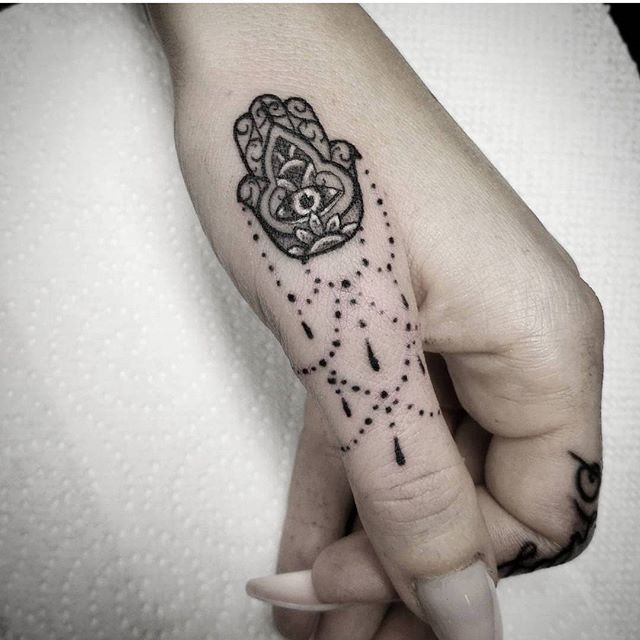
Placement of Hamsa Tattoos
The placement of a hamsa tattoo can also hold significance. Here are some common placements and their meanings:
- Hand: Some people choose to get a hamsa tattoo on their hand, paying homage to the symbol’s origins. This placement can represent protection and strength.
- Arm: A hamsa tattoo on the arm can symbolize strength and power.
- Neck: The neck is a popular location for hamsa tattoos. It is believed that wearing the hamsa close to the heart can bring good luck and positive energy.

Hamsa Tattoo Ideas
If you’re considering getting a hamsa tattoo, here are some ideas to inspire you:
- A traditional hamsa with intricate designs and patterns.
- A minimalist hamsa tattoo on the wrist or ankle.
- A mandala hamsa tattoo on the back or chest.
- A watercolor hamsa tattoo on the arm or thigh.

Hamsa Tattoo Care Tips
Taking care of your hamsa tattoo is important to ensure that it heals properly and looks its best. Here are some tips for caring for your new tattoo:
- Keep it clean: Use mild soap and warm water to gently clean your tattoo twice a day.
- Moisturize: Apply a thin layer of unscented lotion to your tattoo to keep it moisturized.
- Avoid sun exposure: Keep your tattoo out of direct sunlight and avoid tanning beds until it is fully healed.
- Wear loose clothing: Tight clothing can rub against your tattoo, causing irritation and slowing the healing process.
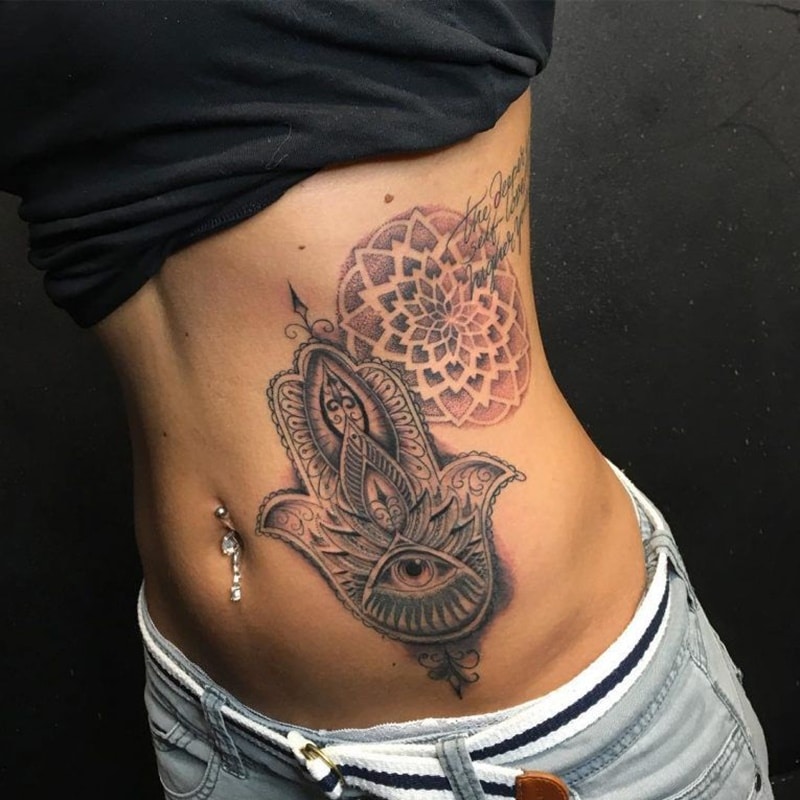
Conclusion
Hamsa tattoos are a beautiful and meaningful way to express yourself and connect with spirituality. Whether you choose a traditional design or a modern twist, a hamsa tattoo can hold deep personal significance. By understanding the history and symbolism behind the hamsa, you can make an informed decision about incorporating this powerful symbol into your body art.

I am Harvey Berry, a tattoo enthusiast who has immersed himself in the diverse world of ink, passionately exploring the beauty and artistry within each tattoo. My mission extends beyond uncovering the aesthetics of tattooing; it involves sharing in-depth knowledge across all aspects of this art form.
Fueled by genuine curiosity and love for every facet of tattooing, I have diligently crafted well-researched articles, with a special focus on the Tattoo Meaning of Impeccable Nest section. Here, my aim is to help the tattoo community gain a deeper understanding of the meanings and values embedded in each tattoo.
One of my primary goals is to encourage responsible decision-making when it comes to getting inked. I recognize that choosing to get a tattoo is a significant personal decision that requires careful consideration. Hence, I provide diverse resources covering the meaning of tattoos, the tattooing process, aftercare tips, and other valuable information.
Whether you are a seasoned tattoo enthusiast or embarking on your first exploration of the world of body art, I aspire to be a reliable resource for you at every step of your journey. I hope that my extensive knowledge of tattoos, especially in the Tattoo Meaning section, will assist you in finding inspiration to express yourself through the art of tattoos.
